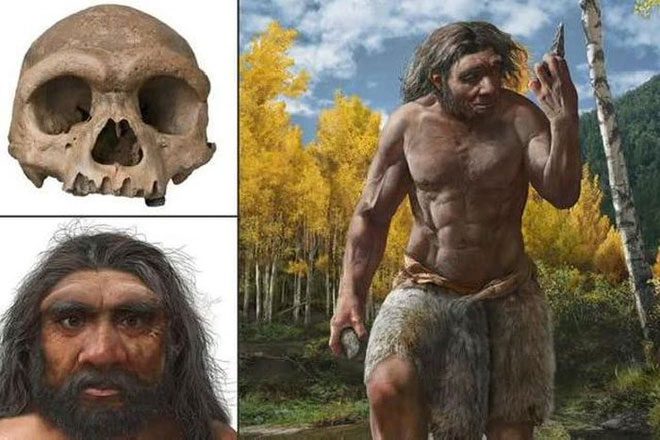The fossilized skull of the “Dragon Man” reveals a new branch in the human family tree, closer to modern humans than Neanderthals.
The discovery of a large fossilized skull hidden in a well in China nearly 90 years ago has compelled scientists to rewrite human evolutionary history. Analysis of the fossil unveils a new branch on the human family tree, belonging to a previously unknown relative that is more closely related to modern humans than to Neanderthals.

The large body size may have helped Homo longi adapt to harsh living conditions. (Photo: CNN).
Chinese researchers have named the new species “Dragon Man” (Homo longi). According to Professor Chris Stringer from the Natural History Museum in London, a member of the research team, this is an exceptionally well-preserved fossil.
In 1933, Chinese workers discovered the skull while building a bridge over the Songhua River in Harbin, Heilongjiang Province, during the Japanese occupation. To prevent the skull from falling into Japanese hands, they wrapped it up and hid it in an abandoned well. The fossil was rediscovered after a worker revealed the secret to his grandson before he passed away.
The international research team, led by Professor Qiang Ji from Hebei University of Geosciences, utilized geoarchaeological techniques to narrow down the search area for the skull, which is dated to be at least 146,000 years old. This skull is a unique combination of primitive and modern features, with a face particularly resembling Homo sapiens and extremely large molars. The skull measures 23 cm in length and over 15 cm in width, significantly larger than that of modern humans, with a volume of 1,420 ml. Below the brow ridge, there are quite large square eye sockets. According to Stringer, this species had a very large head.
The researchers believe the skull belonged to a man about 50 years old. His broad nose allowed him to take in more air, helping him endure the harsh winter climate in the region, indicating an active lifestyle. Professor Xijun Ni, a paleoanthropologist in Hebei, suggests that Homo longi had a robust physique. He noted that it is difficult to estimate the height of Homo longi, but the large head indicates they were taller than the average modern human.
To determine the position of Homo longi in human history, scientists input measurement results from the fossil and 95 other skulls into software to construct the most fitting family tree. Surprisingly, they found that the skull from Harbin formed a new branch closer to modern humans than to Neanderthals. They published the details of their research in the journal The Innovation on June 25.
However, another possibility is that the skull from Harbin could belong to a Denisovan, a mysterious extinct group known primarily through DNA and bone samples collected from Siberia. “This specimen could certainly be Denisovan, but we need to be cautious. What we need is to gather more complete bone material from Denisovans alongside DNA,” Stringer emphasized.





















































